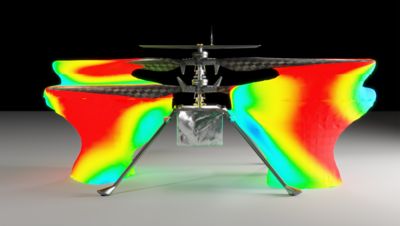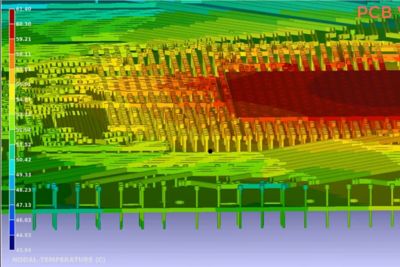主题详细信息
什么是仿真?
仿真是对现实世界中可能存在的流程或系统的功能的一种模拟表示。这个词语来自拉丁语词根Simare,意思是“模仿”。仿真的用途有很多,包括预测系统行为,培训学生,排查异常行为,确认预期响应,验证方法,优化流程的各个方面或预测未来响应等等。
当无法接触真实系统,或者实际情况过于危险,抑或产品或流程仍处于设计阶段时,就是仿真大展身手的时候。
如何进行仿真?
工程师可使用物理原型、数学模型或计算机方法进行仿真。首先在模型中输入一组变量,然后捕获一组输出值。通过以下步骤可以完成此操作:
- 定义问题:确定仿真目标,并记录清晰的输入和输出。
- 前处理:用户可为其仿真构建物理、数学或计算机模型。在这个步骤中,需要指定约束条件、边界条件、材料和几何结构等因素。
- 求解:对单个或多个模型进行求解(通常借助计算机程序),从而生成所需的输出。
- 后处理:用户结合采用人工审核和计算机数据分析的方式,以查看输入与输出,并为决策收集信息。后处理的输出可以是文本、图像、图形或动画。
- 迭代:仅执行一次仿真通常是不够的,用户需要通过手动或使用优化工具来更改输入参数,然后重复仿真,以获得有关系统的更多信息。
常见的仿真应用
研究人员、分析人员、决策者和工程师跨多学科开展仿真,以获得洞察。以下是一些在不同领域中应用仿真的示例:
- 天气:仿真被广泛用于天气预报。各种仿真软件会通过经验数据和数学模型来预测全球未来温度、风力、气压、降水和自然灾害的概率。
- 产品定价:决策者可以使用仿真(通常基于AI方法)来了解价格变化的潜在影响,而无需更改价格并查看其对销售的影响。
- 供应链:许多工具使用时序和相关性对企业供应链的行为进行建模。用户可以快速对中断情况的解决方法进行仿真,或优化其供应链的成本、速度或稳健性。
- 机器:仿真的最大用途,是机器设计和生命周期管理。从计算机芯片到火箭发动机,工程师使用基于物理定律建模的仿真来推动产品设计,从而满足设计规范、优化性能并最大限度地降低成本。
- 电子设计:在电子电路中,基于电场和磁场的相互作用十分复杂,往往难以预测。而电路仿真器可用于在设计阶段计算电路的行为,预测每个时间点的电压、电流和电磁场强度。
- 化学加工:工程师使用各种流程仿真工具来表示化工厂和炼油厂的组件和系统行为。
- 生物学中的分子过程:分子过程建模方面的最新进展,以及对复杂有机分子相互作用机制的深入理解,正在推动医疗行业的变革。研究人员可以在投入数百万美元进行药物合成和临床试验之前,先通过仿真开发疫苗、抗生素和治疗方案的新配方。
- 电子游戏:几乎每个人都以电子游戏的形式接触过仿真。计算机游戏既可以像手机上的单人纸牌游戏一样简单,也可以通过复杂的算法和虚拟现实(VR)来模拟虚拟世界。
为什么仿真是一种有价值的工具
仿真已成为各行业决策中不可或缺的一部分。随着用于建模与仿真的计算机程序不断改进,仿真的实时性和价值也随之提高。在大多数情况下,产品或流程的利益相关方使用仿真来了解有关该产品或流程的信息。这些信息可以降低开发成本,避免昂贵的物理测试,最大限度地减少在使用系统或流程时进行变更的需求,并加快各新产品或服务的整体上市进程。
仿真有诸多优势,包括降低成本、提高安全性、优化性能和缩短开发时间等,这些优势可以归类到以下的一个或多个类别:
1.在设计空间内对外部性能进行全面映射分析
测量实际产品的性能只能揭示其在实际条件下的性能表现,而且前提是该产品已经被制造出来了。而使用计算机模型,研究人员和工程师就可以根据需要尽可能多地探索系统可能遇到的各种情境。
这一流程被称为探索设计空间,它使工程师能够深入了解产品在无法测量或尚未出现的情况下的行为表现。其中,获得的信息可用于解决问题,在多个可用选项中做出决策,或提供关于产品或服务差异化优势的详细信息。
2.了解内部性能
一些系统行为是无法被直接测量的,因为没有合适的测量方法,又或者是一旦添加传感器或其他测量工具,就会改变系统的行为。计算机仿真则使工程师能够查看他们正在设计的产品或流程的内部情况,并获取相关信息——了解这些隐藏的数据,有助于解决问题并进行更优决策。
3.优化性能
仿真的最后一个显著优势是,能够更改输入和捕获输出,以优化正在仿真的系统或流程。您可以探索来自多个仿真的数据,或设置优化循环来实现目标。无论使用哪种优化方法,都可以显著降低成本、提高性能,并增强稳健性。
仿真精度正在不断提升
自20世纪80年代以来,随着高性能计算(HPC)功能的增强,数学模型、计算机科学和模型构建软件的发展,以及最近人工智能(AI)的进步,仿真的精度和价值已获得了显著提升。如今,更好的软件使仿真更加易于使用,同时改进的可视化和优化工具为用户提供了更深入的洞察。如果应用得当,仿真始终能够产生积极的影响;同时,精度的提高不仅增强了仿真的优势,还扩大了仿真的有效应用范围。
工程和制造业中不同形式的仿真

“机智号”火星直升机在执行火星飞行任务前,NASA进行了大量仿真工作。
对于工程领域的大多数人而言,听到“仿真”一词,会让他们想到数值仿真,如有限元分析(FEA)或计算流体力学(CFD)。这是计算机辅助工程(CAE)的两种常见形式,但其实,仿真有多种形式。以下是最常见的类别:
物理模型
过去,在计算机仿真出现之前,建立物理原型进行测试曾是最常见的仿真类型。这些模拟模型,被用作对系统进行实验和了解系统的一种方法。比如,车辆碰撞测试中使用的假人测试模型就是一种典型的物理原型。它们被用于在仿真环境中模拟人体在冲击过程中的行为,因为这类测试无法用真人安全地完成。物理测试通常被用于验证计算机仿真。Ansys Hans人体模型是数字版物理仿真的一个示例。

Ansys Hans人体模型取代了简单的物理人体模型,可提供有关人体如何响应冲击事件的详细数据。
解析解
在某些情况下,工程师可以用一个方程来描述一个系统或流程(特别是制造流程)的行为,并能在实时情况下求解该方程。这些解析解可以单独使用,也可以与系统模型中的降阶模型(ROM)和数据分析结合使用。
数据分析
另一类仿真,是基于从物理测试中收集的数据,或使用离散化方法或解析解得到的计算机模型结果来进行预测。这既可以像用一个方程拟合数据一样简单,也可以像最新的AI和机器学习(ML)算法一样复杂。
离散化
大多数真实世界的流程和系统太过复杂,以至于无法使用简单的方程或数据集进行建模。为了对这些复杂的情况进行仿真,对象或流程需被分为更小的部分,而每个部分都用更简单的方程进行描述。然后,我们将这些方程组合成矩阵,并使用数值方法进行求解。这种方法被用于Ansys Mechanical结构FEA软件等工具、Ansys Fluent流体仿真软件等CFD程序、或Ansys Thermal Desktop软件等1D有限差分仿真工具中。
系统模型
通过将解析解或降阶模型连接到方程组中来构建系统模型,其中,一个节点的输出将成为下一个节点的输入。系统仿真的范围十分广泛,从使用Ansys RedHawk-SC软件等工具对微芯片中的晶体管阵列进行建模,到使用Ansys Systems Tool Kit(STK)软件对在轨卫星进行仿真,不一而足。基于模型的系统工程(MBSE)是一种不断发展的系统设计方法,它取代了传统的基于文档的方法。
在仿真中,用户的交互位置具有重要意义
对不同仿真类型进行分类的另一种方法是,查看用户在流程中所处的位置。比如,人在环(HiL,Human-in-the-loop)仿真,通过图形用户界面(GUI)(如在Ansys SCADE软件中)或通过虚拟现实环境,将用户直接置于仿真环节中。通过将人员置于仿真环境中,团队可以获得系统的实践经验。飞行仿真器就是一个常见的示例,其中,用户可以实时与仿真进行交互。
不过,在大多数仿真中,人员并不参与求解部分,而是使用各种工具来捕获和评估结果,然后利用这些信息做出明智的决策,或者将其传递给利益相关方,让他们自己依靠这些信息进行决策。
单个物理场、多个物理场和多物理场
不同类型仿真之间的另一个区别在于它们包含哪些物理域,以及它们的交互方式。单个物理场仿真可求解一种未知量,如温度、应力、压力或疲劳循环次数。在这种情况下,您只需要与该物理域相关的方程和输入。在具有多个物理场的仿真中,一个仿真的输出将成为另一个仿真的输入。例如,您可以计算微芯片由于功率损耗而产生的热量,然后将该值输入到评估微芯片热管理选项的仿真中。
多物理场仿真可实现闭环:下游仿真的结果,会被馈送到上游仿真中。还是以微芯片为例,芯片的温度会影响其电磁性能和电阻率,进而影响芯片产生的热量和电气性能。使用Ansys Redhawk-SC Electrothermal软件这样的工具进行多物理场仿真,可自动化实现电磁物理场和热物理场之间的双向耦合交互。多物理场仿真在涡轮发动机设计和铸造、注塑成型和金属成形等许多制造流程中也很常见。
数值仿真方法的类型
我们也可以根据软件编程中所采用的下列数值方法,对上述所有使用数学方法对真实世界进行仿真的方法进行分类。最常见的数值方法包括:
- 1-D、电路或网络建模:这是一种不对模型组件的几何形状进行明确描述的建模方法。程序将求解节点上的输入和输出,而不是体积或区域上的输入和输出。
- 基于代理模型的仿真:这是一种将系统表示为一系列相互作用的自主代理模型的技术。
- 计算流体力学:这是一种用于描述流体流动几何行为的方法。它使用有限元法(FEM)、有限体积法(FVM)或有限差分法(FDM)来求解通过离散化产生的偏微分方程(PDE)。
- 数字孪生:一个通用术语,指任何物理对象或系统的数字化表现形式。
- 离散事件仿真(DES):这是一种将真实世界系统、设施或流程表示为一系列时间事件的方法。系统状态仅在特定事件点发生变化,因此求解器是从一个事件跳转到下一个事件,而不是按照固定的时间增量推进。
- 显式动力学(EXD):这是一种有限元分析(FEA)方法,采用显式时间积分方式,计算微小时间增量上外载荷作用下的响应。它主要用于处理高度动态且高度非线性的行为,例如冲击仿真。
- 有限差分法:这是一种通过在离散化的系统中计算PDE的数值,从而近似求导数的方法。
- 有限元法:这是一种用于有限元分析(FEA)的方法,其将几何结构离散为若干单独单元,并求解每个单元的PDE,来获得整体解。
- 有限体积法:这是一种将几何结构划分为控制体积进行分析的方法。
- 蒙特卡罗仿真:这是一种通过反复进行随机采样求解问题的统计仿真方法。
- 多体动力学(MBD):这是一种用于描述由刚体或柔性体组成的系统的动态行为的方法,其能求解每个组件的完整运动方程。
现代仿真在工程和制造业中的5大示例

Ansys Redhawk-SC Electrothermal软件可以对多物理场模型中的功率分布和温度进行建模。
1.微芯片签核
开发新型微芯片,无论是存储器件还是最新的片上系统(SoC)解决方案,都极其昂贵。因此,制造这些芯片的半导体代工厂,要求开发人员在制造流程开始之前,通过一系列标准仿真验证设计的可制造性。这些验证步骤被称为签核。例如,Ansys电源完整性和片上电磁仿真工具获得了英特尔的认证,可用于对其18A工艺技术进行验证。
2.汽车喷漆机器人
汽车喷漆在每条现代装配线中都是一个关键步骤,而且汽车制造商高度依赖机器人来执行这项任务。工程师会使用Fluent软件等CFD仿真工具对喷漆机进行建模,使用Ansys Motion软件等程序对机器人进行建模并确保高效运行和避免碰撞,使用Ansys Maxwell软件对机器人的电机驱动进行优化,以及利用Ansys SCADE One解决方案对控制软件和用户界面进行仿真。
3.量子计算机设计
仿真一直被用于推动计算机设计,在量子计算机的开发中尤为如此——由于这些新型设备要求的的运行环境温度极低,并涉及复杂的量子物理原理,仿真在研发时起到了至关重要的作用。专业工具(如Ansys Lumerical INTERCONNECT软件和Ansys RaptorQu软件)使工程师能够在进行成本高昂的制造和测试之前,就对其设计进行优化。
4.喷气式发动机的可持续燃料
飞机涡轮发动机将消耗大量燃料,而这显著增加了大气中的碳排放。因此,发动机制造商正在转向利用仿真来帮助他们开发替代燃料,以便可持续性地产生或释放更少的碳。他们使用化学反应仿真器(如Ansys Chemkin-Pro软件)来优化新燃料的燃烧,并使用Mechanical或Fluent软件来修改发动机,以支持氢基燃料。
5.电动方程式赛车
赛道是推动技术创新的最佳场所之一。现代电动方程式赛车的不断发展便是一个良好例证,在赛事中,车手和工程师们会测试最新的电动车技术。为了保持竞争优势,泰格豪雅保时捷电动方程式车队高度依赖仿真来验证建议的设计变更。
欢迎立即联系我们,以进一步了解Ansys软件如何帮助企业利用仿真的预测功能来突破设计极限。
相关资源
现在就开始行动吧!
如果您面临工程方面的挑战,我们的团队将随时为您提供帮助。我们拥有丰富的经验并秉持创新承诺,期待与您联系。让我们携手合作,将您的工程挑战转化为价值增长和成功的机遇。欢迎立即联系我们进行交流。